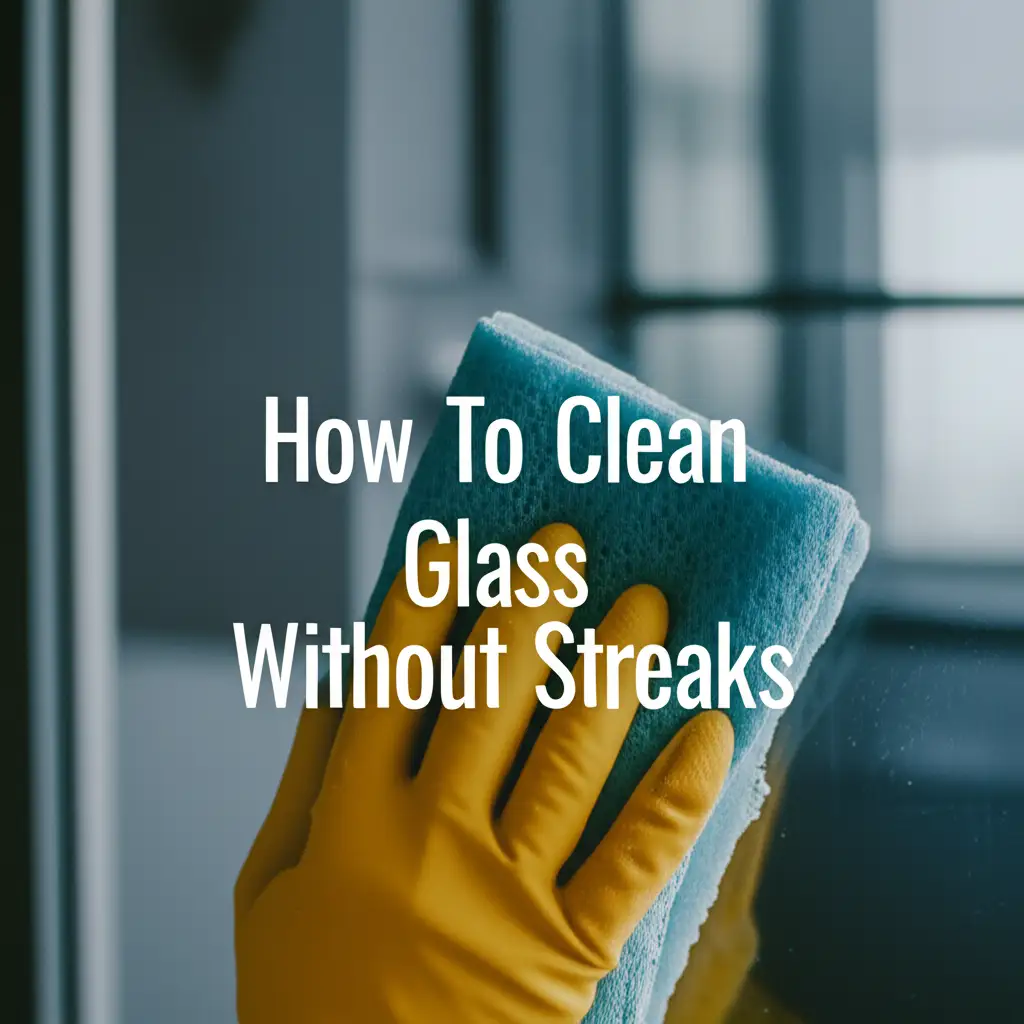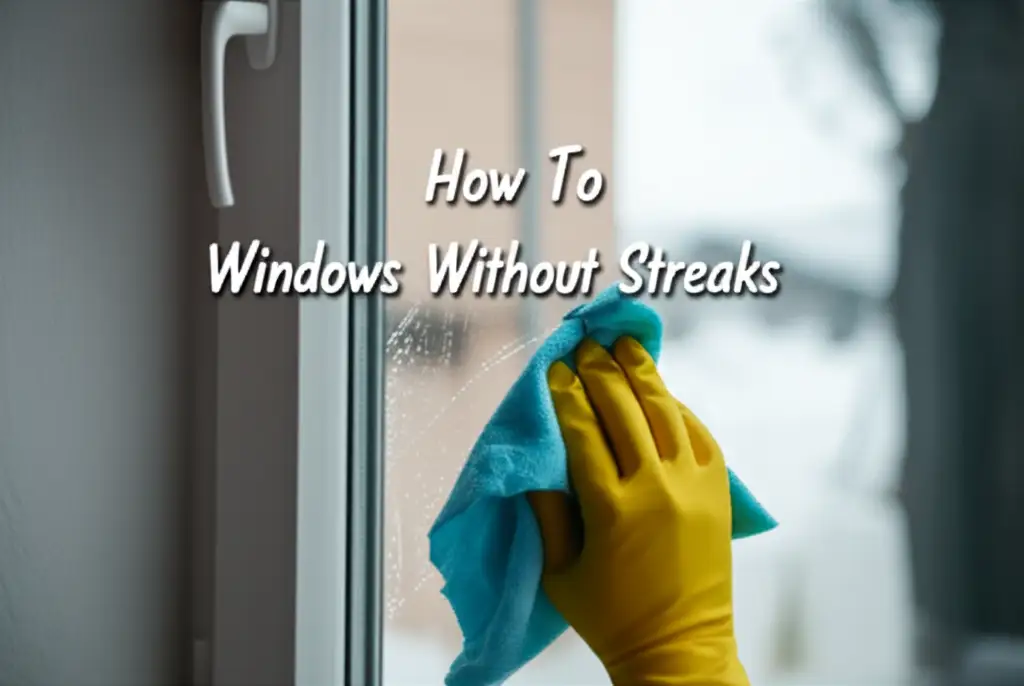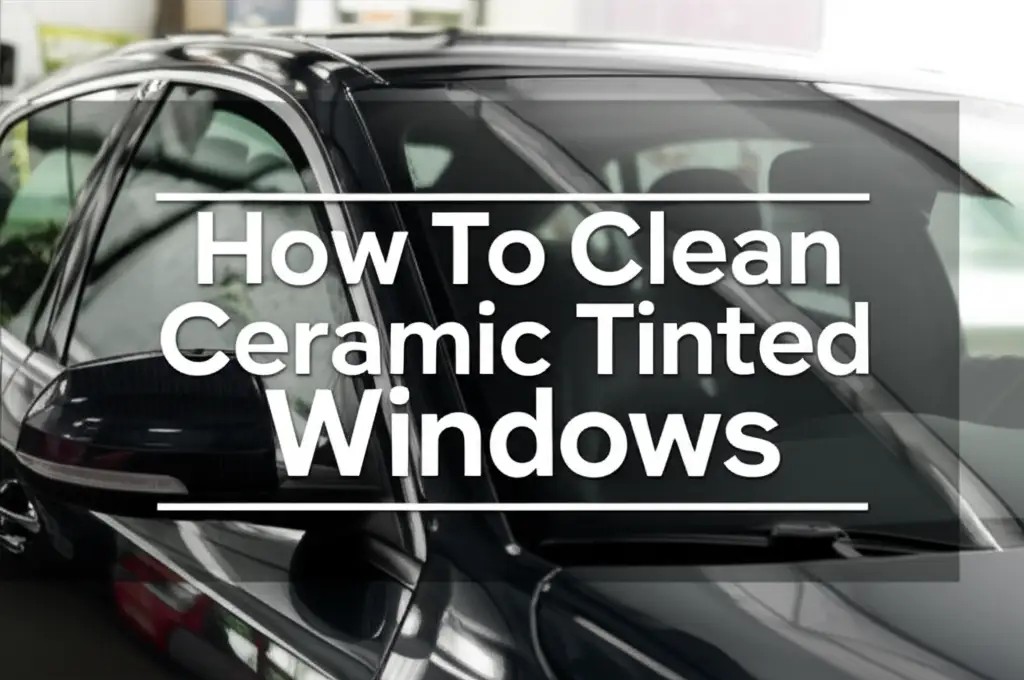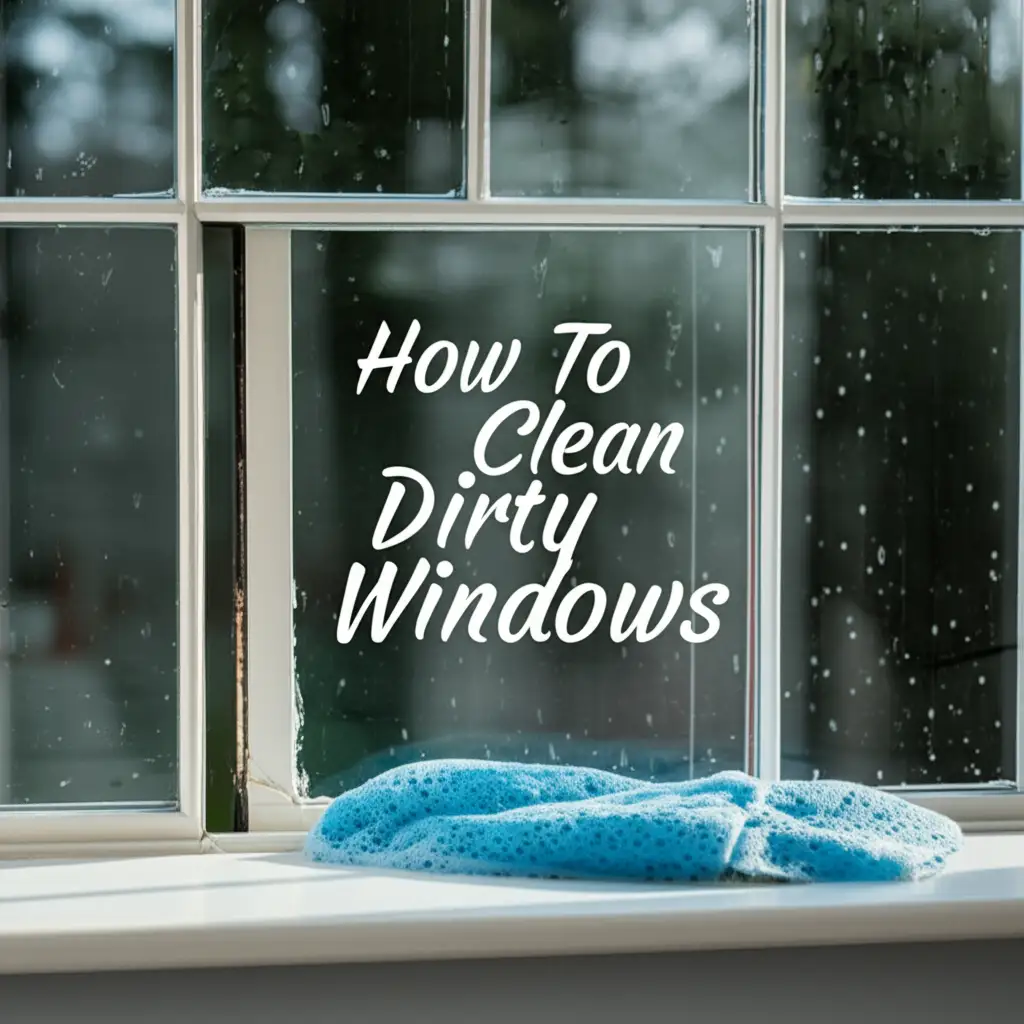· Home Cleaning · 19 min read
How To Clean Vinyl Windows In Sunroom

Sparkling Views: How To Clean Vinyl Windows In Sunroom
Your sunroom is a special place. It brings the outdoors inside, letting natural light fill your home. The large vinyl windows in a sunroom are key to this experience. Over time, these windows can collect dirt, grime, and streaks. This build-up blocks your beautiful view. Learning how to clean vinyl windows in sunroom spaces properly keeps them looking new. It also extends their life. This guide will walk you through every step. We will cover choosing the right tools, safe cleaning solutions, and simple techniques. Soon, your sunroom windows will sparkle, ready for you to enjoy.
Takeaway
- Gather essential tools and gentle cleaners before you start.
- Always pre-clean to remove loose dirt and debris.
- Use a soft cloth or sponge and mild soap for a streak-free finish.
- Rinse thoroughly to prevent soap residue and spotting.
- Maintain your windows regularly to keep them clear and clean.
Cleaning vinyl windows in a sunroom involves a gentle approach. You should use mild soap or a vinegar solution with soft cloths or a squeegee. Always pre-rinse to remove loose dirt. Work in sections, then rinse and dry quickly to avoid streaks.
Why Vinyl Windows Need Special Care
Vinyl windows offer many benefits in a sunroom. They are durable, energy-efficient, and generally low-maintenance. These windows resist rot and pests. They also stand up well to different weather conditions. Despite their toughness, vinyl materials need specific care when cleaning. Harsh chemicals or abrasive tools can scratch or dull the surface. This damage can happen easily. Once scratches appear, they are often permanent. Damaged vinyl can also attract more dirt. Using the correct methods keeps your vinyl clear and extends its life. This ensures your sunroom remains a bright, welcoming space.
Understanding Vinyl Window Surfaces
Vinyl windows are made from PVC. This material is strong but has a softer surface than glass. This makes it more prone to scratching. The surface also has microscopic pores. These pores can trap dirt and pollutants over time. Using rough scrubbers pushes dirt into these pores. This can lead to a cloudy appearance. Standard glass cleaners might contain ammonia or alcohol. These ingredients can dry out vinyl or cause discoloration. A gentle approach protects the window’s integrity. It keeps the surface smooth and clear.
Common Issues with Sunroom Windows
Sunroom windows face unique challenges. They get more direct sunlight. This sun can bake on dirt and hard water spots. Dust, pollen, and environmental pollutants collect quickly. Rain and sprinklers often leave mineral deposits. If you have a hard water problem, these spots become very stubborn. Inside the sunroom, condensation can lead to streaks. Pet smudges and fingerprints are also common. Regular cleaning prevents these issues from building up. It keeps your view clear all year. Addressing these problems early makes cleaning easier. It also preserves the beauty of your sunroom.
Gathering Your Essential Cleaning Supplies
Before you begin cleaning your sunroom’s vinyl windows, collect all necessary supplies. Having everything ready makes the process smoother. You avoid stopping midway to search for an item. The right tools and cleaners ensure effective results. They also prevent damage to your window frames and glass. Using proper equipment helps you achieve a streak-free shine. This preparation step saves you time and effort. It sets you up for a successful cleaning session.
Gentle Cleaning Solutions for Vinyl
Choosing the correct cleaning solution is vital for vinyl windows. Avoid harsh chemicals like ammonia-based cleaners. Do not use abrasive powders or solvents. These can strip protective coatings or damage the vinyl itself. Instead, opt for mild, pH-neutral cleaners. A simple mixture of dish soap and warm water works well. You can use a few drops of dish soap in a bucket of water. This creates a gentle, effective solution. For a natural option, mix white vinegar with water. A 1:1 ratio is often sufficient. Vinegar is excellent for cutting through grime and hard water spots. For more stubborn stains, a slightly stronger vinegar solution can help. You can learn more about cleaning with vinegar and baking soda for various cleaning tasks. Always test any new solution on a small, hidden area first. This ensures it does not harm your specific vinyl material.
Tools for a Streak-Free Shine
The right tools contribute significantly to a streak-free finish. Here is a list of what you will need:
- Two Buckets: One for your cleaning solution, one for rinse water.
- Soft Cloths or Microfiber Towels: Use these for washing and drying. Microfiber is ideal. It traps dirt effectively and leaves no lint.
- Soft-Bristle Brush or Sponge: For scrubbing stubborn dirt. Ensure it is soft enough not to scratch the vinyl.
- Squeegee (Optional but Recommended): A high-quality squeegee helps achieve professional, streak-free results. Make sure the rubber blade is clean and sharp.
- Garden Hose with Spray Nozzle: For rinsing larger exterior windows.
- Ladder or Step Stool: For reaching higher windows safely. Always use caution when working at heights.
- Vacuum with Brush Attachment: For removing loose dirt and dust from frames and sills before washing.
These tools, combined with a gentle cleaning solution, provide the best outcome. They protect your vinyl windows while making them sparkle.
Step-by-Step Guide to Cleaning Your Sunroom Vinyl Windows
Cleaning your sunroom vinyl windows requires a systematic approach. Following these steps ensures you remove dirt effectively. It also helps prevent streaks and damage. Work on one window at a time. This keeps your cleaning solution fresh and your results consistent. Always prioritize safety, especially when reaching high windows. This detailed process will make your sunroom windows shine.
Step 1: Prepare the Area and Pre-Clean
Preparation is key for effective window cleaning. Begin by removing any nearby furniture or decor. This protects them from water and cleaning solutions. Lay down old towels or drop cloths on the floor inside the sunroom. This catches drips and prevents slips. For the windows themselves, start with a dry pre-clean. Use a vacuum cleaner with a brush attachment. Go over the window frames, sills, and tracks. This removes loose dirt, dust, and spiderwebs. Dry brushing with a soft brush also works. This step prevents muddy streaks later when you apply water. It makes the actual washing much more efficient. Do not skip this crucial initial phase.
Step 2: Wash the Exterior Windows First
Always clean the exterior windows before moving inside. Outdoor windows gather more dirt and grime. Starting outside prevents re-soiling your freshly cleaned interior windows. Use your garden hose to rinse the entire exterior surface of the window. A gentle spray helps loosen stuck-on dirt. It also washes away loose debris missed during pre-cleaning. After rinsing, apply your chosen gentle cleaning solution. Use a soft sponge or microfiber cloth. Work from top to bottom. This lets gravity help carry dirt downwards. Scrub gently to lift dirt and grime. Pay attention to corners and edges. Make sure to cover the entire vinyl surface and the glass. For tough spots, you might need a bit more solution and gentle scrubbing.
Step 3: Rinse and Dry Exterior Windows
After washing, thoroughly rinse the exterior windows. Use your garden hose again. Make sure to wash away all soap residue. Soap left on the windows can dry and leave streaks or a hazy film. Rinse from top to bottom, letting the water run off the glass. Once rinsed, it is time to dry. For best results, use a squeegee. Start at the top corner. Pull the squeegee in a straight, overlapping motion across the window. Wipe the squeegee blade with a clean, dry cloth after each pass. This prevents transferring dirty water back onto the window. If you do not have a squeegee, use a clean, dry microfiber cloth. Buff the window until it is completely dry and streak-free. Change cloths often if they become damp. This attention to detail ensures crystal-clear results.
Step 4: Move Inside: Cleaning Interior Windows
Now it is time to tackle the interior windows. These generally have less heavy grime. They might have fingerprints, dust, or condensation marks. Start by lightly dusting the interior frames and sills. Use a dry microfiber cloth. Then, prepare your cleaning solution. You might use the same mild dish soap solution or a vinegar-water mix. Apply the solution using a clean spray bottle or a damp microfiber cloth. Work in small sections. Gently wipe the vinyl surfaces and glass from top to bottom. For any stubborn spots, a little extra attention with the cloth usually works. Remember to use gentle pressure. This protects the vinyl from scratches.
Step 5: Final Rinse and Polish Inside
After washing, rinse the interior windows. A separate bucket of clean water and a clean, damp cloth works best here. Wipe down the windows to remove all soap residue. Rinse your cloth often in the clean water. Once rinsed, immediately dry the windows. Use a clean, dry microfiber cloth. You can also use a squeegee if you prefer. Again, wipe the squeegee blade after each pass. Buff the glass and vinyl surfaces until they shine. Check for any remaining streaks from different angles. Sometimes, streaks only show from a certain light. A final polish with a dry cloth will ensure a perfect, clear view. Enjoy your newly sparkling sunroom windows!
Tackling Stubborn Stains and Unique Challenges
Even with regular cleaning, sunroom vinyl windows can face stubborn issues. Hard water spots, mold, and deeper grime can be tricky. Knowing how to handle these specific problems makes a big difference. These challenges often require a bit more focused effort. However, with the right approach, you can restore your windows. Do not give up if your first cleaning pass does not remove everything. Persistence and proper techniques will get the job done.
Removing Hard Water Spots and Mineral Deposits
Hard water spots are a common problem, especially on sunroom windows. These are mineral deposits left behind when water evaporates. They look like hazy white spots. A vinegar solution is often very effective for these. Mix equal parts white vinegar and water in a spray bottle. Spray the affected areas generously. Let the solution sit for 5-10 minutes. The acidity in the vinegar helps dissolve the mineral deposits. After soaking, gently scrub the spots with a soft cloth or sponge. For very stubborn spots, you might need to reapply the vinegar and let it sit longer. You can also make a paste with baking soda and water. Apply this paste to the spots, let it sit, then gently scrub. Rinse thoroughly to remove all vinegar or baking soda residue. This method will bring back the clarity of your windows. If you need more general advice, consider reading about how to clean hard water off windows.
Dealing with Mold and Mildew on Vinyl Frames
Mold and mildew can grow on vinyl frames, especially in humid sunrooms. These look like black or green spots. They can also have a musty smell. A solution of bleach and water is very effective against mold. Mix one part bleach with ten parts water. Put this in a spray bottle. Spray the affected areas. Let it sit for 10-15 minutes. The bleach kills the mold spores. Then, scrub with a soft brush or cloth. Make sure to wear gloves and provide good ventilation when using bleach. For a less harsh option, use white vinegar straight. Spray full-strength vinegar on the mold. Let it sit for an hour. Then scrub and rinse. Vinegar is a natural mold killer. Always rinse the area well after treating mold. This prevents residue build-up. This also helps keep the mold from returning quickly.
Cleaning Windows in High or Hard-to-Reach Areas
Cleaning high sunroom windows can be a challenge. Safety is the most important factor. Always use a sturdy ladder or extendable pole. Make sure someone is spotting you if using a tall ladder. An extension pole with a squeegee or sponge attachment is very useful. These tools allow you to clean from the ground. Look for poles that have articulating heads. These heads can reach different angles. For exterior windows that are very high, consider a window cleaning service. Some windows might be impossible to reach from inside or outside. If you have windows that are difficult to access, you might find tips on how to clean outside windows from inside useful. This resource could offer alternative methods for tricky spots. Always follow manufacturer instructions for any extension tools. Your safety comes first.
Maintaining Sunroom Windows: Beyond Just Cleaning
Cleaning your sunroom vinyl windows regularly is great. But ongoing maintenance helps keep them clean longer. It also protects your investment. Simple habits and proactive steps can greatly extend the time between deep cleans. Think of it as preventative care. This approach saves you effort in the long run. It also ensures your sunroom remains a pleasant place.
Regular Wiping and Dusting
The easiest way to maintain clean windows is frequent light cleaning. Every week or two, give your windows a quick wipe. Use a dry microfiber cloth to dust the frames and sills. This removes loose dirt and pollen before it sticks. For the glass, a quick spray with a mild window cleaner or plain water can refresh it. Use a clean microfiber cloth to wipe away any smudges. This simple routine prevents heavy build-up. It also keeps your views clear day-to-day. This small effort makes a big difference. It means less intensive cleaning sessions later.
Protecting Vinyl from UV Damage and Discoloration
Sunrooms receive a lot of direct sunlight. Over time, UV rays can cause vinyl to fade or become brittle. While modern vinyl has UV inhibitors, extra protection helps. Consider applying a vinyl protectant. These products often contain UV blockers. They create a barrier against sun damage. Apply them as directed by the manufacturer. Usually, this means cleaning the surface first, then wiping on the protectant. Some homeowners also use UV-blocking window films. These films reduce the amount of harmful UV light entering the sunroom. They also help with energy efficiency. Regular cleaning itself helps. It removes dirt that can trap heat and speed up degradation. Protecting your vinyl keeps it looking newer longer. It also maintains its strength.
Inspecting for Wear and Tear
Regular cleaning offers a chance to inspect your windows closely. Look for any signs of wear and tear. Check the caulking around the frames. Is it cracked or peeling? Damaged caulking can let in moisture and drafts. Inspect the weather stripping. Is it intact? Damaged weather stripping affects insulation. Check the window screens for tears. Small tears can let in insects. Look for any unusual condensation between double panes. This could signal a seal failure. Addressing these small issues early prevents bigger problems. It extends the life of your windows. It also maintains your sunroom’s comfort and energy efficiency. Early detection saves on costly repairs later.
Common Mistakes to Avoid When Cleaning Vinyl Windows
Cleaning vinyl windows might seem straightforward. However, some common mistakes can lead to streaky results or even damage. Knowing what not to do is as important as knowing what to do. Avoiding these pitfalls will ensure your cleaning efforts are effective. It will also protect your sunroom’s vinyl windows for years to come. Pay attention to these warnings. They will save you time and frustration.
Using Abrasive Cleaners or Tools
One of the biggest mistakes is using the wrong cleaners or tools. Abrasive cleaners contain harsh chemicals. They can include ammonia, bleach (in high concentrations), or solvent-based products. These can strip the protective layers of vinyl. They can cause discoloration or make the material brittle. Similarly, abrasive tools like steel wool, scour pads, or stiff brushes will scratch the vinyl surface. These scratches are permanent. They also trap more dirt, making future cleaning harder. Always use mild, pH-neutral soaps. Stick to soft cloths, sponges, or microfiber towels. This gentle approach protects your vinyl.
Cleaning on a Hot, Sunny Day
Cleaning windows on a very hot, sunny day seems like a good idea. However, it is actually counterproductive. The sun heats the window surfaces. This causes cleaning solutions to dry too quickly. When the solution dries fast, it leaves behind streaks and water spots. The water evaporates before you can wipe it clean. Choose a cloudy day for window cleaning. If a cloudy day is not possible, clean early in the morning or late in the afternoon. These times offer cooler temperatures and less direct sun. This allows you more time to work with the solution. It helps you achieve a streak-free finish.
Neglecting Window Tracks and Sills
Many people focus only on the glass and vinyl surfaces. They often forget the window tracks and sills. These areas collect a lot of dirt, dust, and debris. Neglecting them can lead to problems. Dirt in tracks can impede window operation. It can also cause scratches on the vinyl frames as windows open and close. Use a vacuum cleaner with a narrow attachment to remove loose debris from tracks. Then, wipe them down with a damp cloth and mild cleaning solution. A toothbrush can help clean tight corners. Keeping tracks and sills clean improves window function. It also completes the clean look of your sunroom.
Not Rinsing Thoroughly
Failing to rinse your windows thoroughly is another common mistake. Leftover soap residue will dry on the surface. This creates a hazy film or visible streaks. Even if the windows look clean when wet, they will look bad when dry. After washing, use plenty of clean water to rinse off all the cleaning solution. For exterior windows, a strong spray from a garden hose is ideal. For interior windows, use a clean, damp cloth and rinse it often. Then, follow up with a dry buff. This ensures all residue is gone. It guarantees a clear, streak-free shine. A proper rinse is essential for sparkling results.
When to Call a Professional Window Cleaner
Most sunroom vinyl windows can be cleaned by a homeowner. However, there are times when hiring a professional is the best choice. Recognizing these situations saves you time and effort. It also ensures safety and proper cleaning for challenging circumstances. Professionals have specialized tools and expertise. They can handle jobs that are too difficult or risky for a DIY approach.
Reasons to Hire a Pro
Several factors might suggest hiring a professional. Consider a pro if:
- You have very tall or hard-to-reach windows: Safety is paramount. Professionals have tall ladders, scaffolding, and safety gear. They know how to clean windows safely at heights.
- You notice excessive mold or mildew: If mold covers large areas or seems deep-seated, professional treatment might be needed. They have stronger, but safe, solutions for these issues.
- Your windows have severe hard water staining: Stubborn mineral deposits might require specific chemical treatments. Pros have access to industrial-strength, yet vinyl-safe, descalers.
- You simply lack the time or physical ability: Window cleaning can be physically demanding. If you are busy or have mobility issues, a pro can handle the chore.
- You want a guaranteed streak-free, thorough clean: Professionals aim for perfection. They have the experience and tools to deliver outstanding results every time.
These are good reasons to invest in professional help.
What to Expect from a Professional Service
When you hire a professional window cleaner, expect a comprehensive service. They will typically inspect your windows first. This helps them identify specific cleaning needs. They use commercial-grade equipment and cleaning solutions. These are often more effective than consumer products. Professionals are trained to work efficiently. They usually complete the job faster than a DIY attempt. They also understand how to clean different window materials, including vinyl. They ensure no damage occurs. Most services offer insured work. This means any accidental damage is covered. You can expect sparkling, streak-free windows. The frames, sills, and tracks will also be clean. Many offer recurring service plans. This keeps your sunroom windows clean year-round. It is a convenient way to maintain your beautiful sunroom.
FAQs About Cleaning Sunroom Vinyl Windows
Q1: Can I use a pressure washer on my sunroom vinyl windows?
A1: No, you should not use a pressure washer directly on vinyl windows. The high pressure can damage the vinyl frames and seals. It can force water into the window’s interior, leading to mold or seal failure. A garden hose with a low-pressure nozzle is safe for rinsing. Always keep the pressure gentle.
Q2: What is the best homemade cleaner for vinyl windows?
A2: The best homemade cleaner is a simple mix of warm water and a few drops of mild dish soap. For stubborn grime or hard water spots, a 1:1 solution of white vinegar and water works very well. These solutions are gentle yet effective. They will not harm your vinyl.
Q3: How often should I clean my sunroom vinyl windows?
A3: You should clean your sunroom vinyl windows at least every 2-3 months. If your sunroom is in a high-pollen area or near a construction site, you might need to clean them more often. Regular light cleaning every few weeks prevents heavy build-up.
Q4: Can I use Windex or other glass cleaners on vinyl windows?
A4: You should avoid using Windex or other standard glass cleaners on vinyl windows. Many traditional glass cleaners contain ammonia. Ammonia can dry out vinyl over time. It can also cause discoloration or make the vinyl brittle. Stick to mild, ammonia-free cleaners specifically for vinyl or general window cleaning.
Q5: How do I prevent streaks when cleaning vinyl windows?
A5: To prevent streaks, rinse the windows thoroughly to remove all soap residue. Dry them immediately after rinsing. Use a clean squeegee or a lint-free microfiber cloth for drying. Work in sections and change your drying cloth often if it becomes damp. Avoid cleaning on hot, sunny days.
Q6: Are there any specific products to avoid for vinyl window cleaning?
A6: Yes, avoid abrasive cleaners, scrubbers like steel wool, and solvent-based products (e.g., paint thinners, nail polish remover). Also, steer clear of chlorine bleach in high concentrations, as it can discolor vinyl. Always choose gentle, non-abrasive products for vinyl surfaces.
Conclusion
Cleaning vinyl windows in your sunroom is a straightforward task. It transforms your space, letting in maximum light and showcasing your views. Remember to use gentle cleaning solutions. Always choose soft cloths and tools. Regular maintenance prevents grime from building up. This keeps your windows clear and extends their life. Your sunroom is a retreat, and clean windows enhance its beauty. Take pride in knowing how to care for them properly. Start cleaning today, and enjoy the sparkling results.
- vinyl window cleaning
- sunroom window care
- streak-free windows
- DIY window washing
- window maintenance tips




